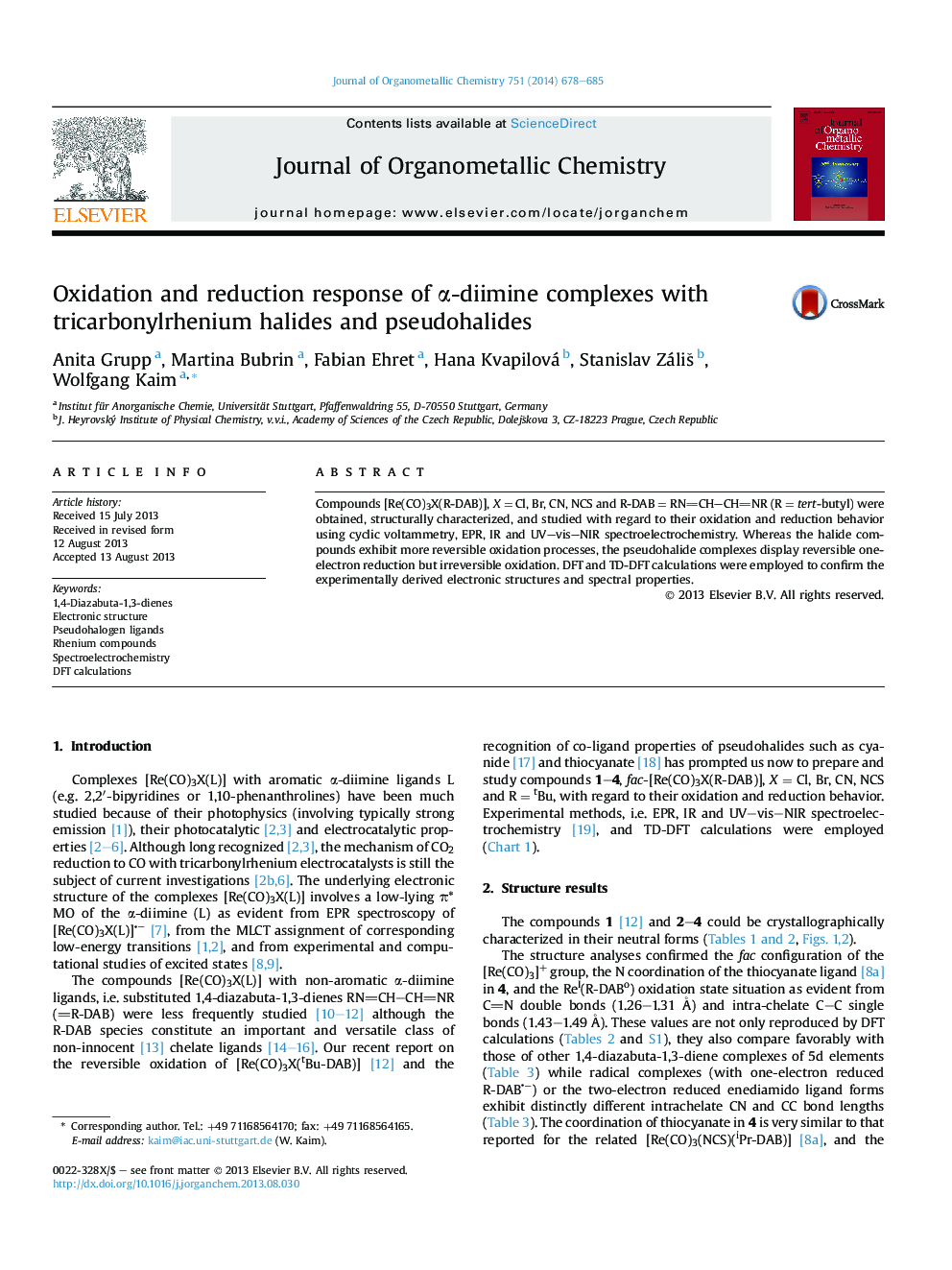| Article ID | Journal | Published Year | Pages | File Type |
|---|---|---|---|---|
| 1324328 | Journal of Organometallic Chemistry | 2014 | 8 Pages |
•The complexes [Re(CO)3(X)(tBuNCHCHNtBu)], X = Cl, Br, CN and NCS have been studied.•The complexes contain unreduced α-diimine ligands according to structure analysis.•Reversible oxidation of the halide complexes occurs at rhenium (IR shift, no EPR).•Reversible reduction of the CN and NCS complexes occurs at the α-diimine (IR, EPR).•The MLCT absorptions of the precursors diminish on oxidation and reduction.
Compounds [Re(CO)3X(R-DAB)], X = Cl, Br, CN, NCS and R-DAB = RNCH–CHNR (R = tert-butyl) were obtained, structurally characterized, and studied with regard to their oxidation and reduction behavior using cyclic voltammetry, EPR, IR and UV–vis–NIR spectroelectrochemistry. Whereas the halide compounds exhibit more reversible oxidation processes, the pseudohalide complexes display reversible one-electron reduction but irreversible oxidation. DFT and TD-DFT calculations were employed to confirm the experimentally derived electronic structures and spectral properties.
Graphical abstractThe HOMO and LUMO of compounds [Re(CO)3X(α-diimine)] have been probed for prototypical cases by EPR, IR and UV–VIS spectroelectrochemistry, supported by TD-DFT calculations.Figure optionsDownload full-size imageDownload as PowerPoint slide
